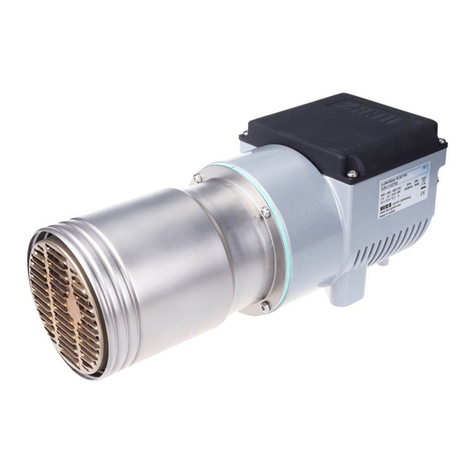
HERZ HIU STOCKHOLM
Page 5
Commissioning
All union nuts must be tightened after installation and before filling
Pre commissioning
Before the first commissioning of the substation it should be ensured that clean and standard tube
materials (without scale, rust and burr inside), fittings and devices (boiler, radiators, convector,
expansion tank inter alia) are used according to ÖNORM H5195-1. Furthermore, the ÖNORM
H5195 prescribes a clean and skilled production (without welding beads, residues of sealing
material or soldering aids, burrs, metal shavings, etc.) as well as a cleaning of all components of a
heating system before its assembly. Otherwise, damage to the regulator could occur due to the
deposits in the pipes. Besides there would be a risk of impurities getting into the drinking water.
The installation of strainers is recommended. To prevent corrosion damage in the system, ÖNORM
H5195-1 prescribes the following: The mounting and operation of a heating system must be carried
out in such a manner that the admission of air is avoided as best as possible. During the first
commissioning the heating system must be flushed with at least 2 times the amount of the system
volume. Afterwards the heating system must be filled with clear and filtrated (pore width < 25 μm)
filling water. The heating system must remain in operation for 24 hours, under operating conditions,
in order to ensure a uniform mixing of the heating water with the inhibitors. Old systems must be
cleaned chemically and then flushed with water before filling. The partial or complete draining of
the heating system for a longer period without preservation is to be avoided as otherwise there will
be increased corrosion in the system. To ensure an adequate frost protection at low temperatures
in the system, the ÖNORM H5195-2 prescribes: Although the antifreeze is miscible with water in all
proportions, approximately two thirds of the required water should be filled into the system when a
circulating pump is integrated. Then add the antifreeze and fill the system with water. By
commissioning a complete mixing of the circuit is achieved. However, thermo siphon units have to
be filled with prepared, frost-protected heat transfer medium. If antifreeze agents must be filled in
so far non-frost-protected heating systems, the following points must be observed:
1. It must be ensured that the appropriate sealing materials are used.
2. The system should be flushed carefully.
3. After filling the system with antifreeze, extra attention must be paid to the occurrence of
leakages.
After the installation the system must be checked for its tightness. The tightness test of the system
is only carried out with connected impulse line and opened impulse line ball valve. The pressure
increase has to be carried out uniformly at all connections. Max. test pressure = 1.5 x operating
pressure. Max. differential pressure = 2 bar for water.
For any other kind of medium the tightness test must be carried out with corrected values.
Non-observance can lead to damages to the system or to the controller and also automatically
leads to a loss of warranty!
Filling and venting
Open the ball valves from left to right slowly taking care not to induce any water hammer.
Slowly open the ball valve on the primary flow.
Slowly open the ball valve on the primary return and release any air using the manual air vent.
Slowly open the ball valve on the mains cold water inlet.
Slowly open the ball valve on the domestic hot water outlet and open a hot tap for several
minutes. Close tap and release any air using the manual air vent.
Slowly open the secondary space heating flow ball valve
Slowly open the secondary space heating return ball valve
Open the ball valve at the filling loop between the incoming CWS and secondary heating and
fill the secondary space heating system until the pressure reaches the required operating
pressure. Then release any air using the manual air vent. Refill the space heating system as
the pressure drops and check for leaks.
Connect the electronic parts according to the wiring diagram. Please refer to pump literature for
venting procedure and ensure pump is set to constant DP setting.
Vent the radiators and the manual air vent again, check the pressure and top up the space
heating system if required.
Repeat this process until there is no more air in the system and the pressure remains stable at
operating pressure.






































